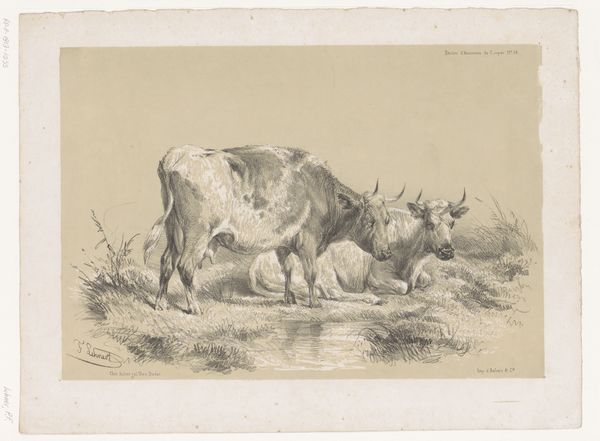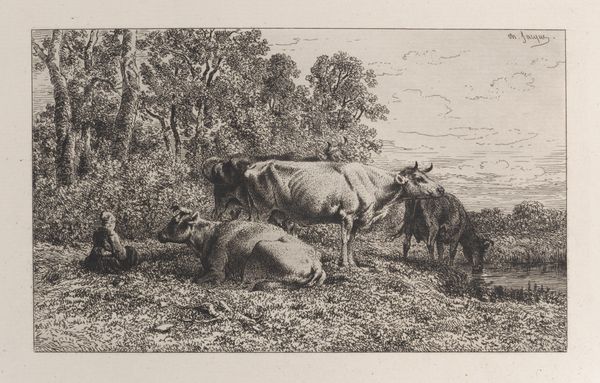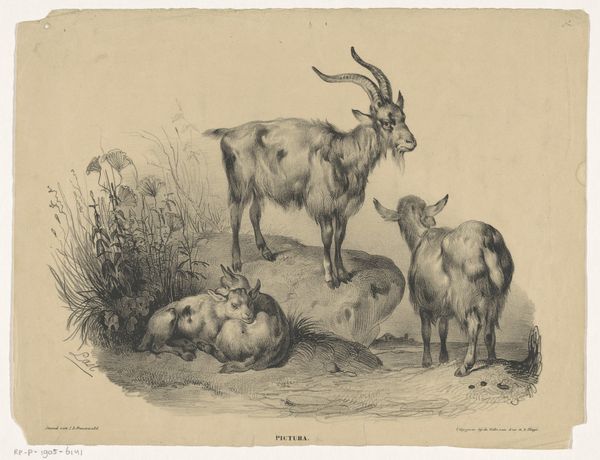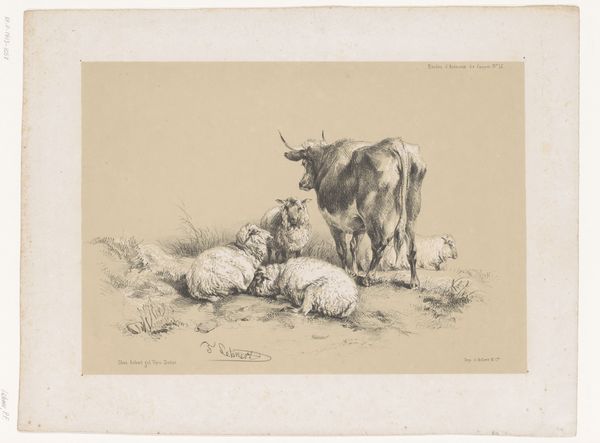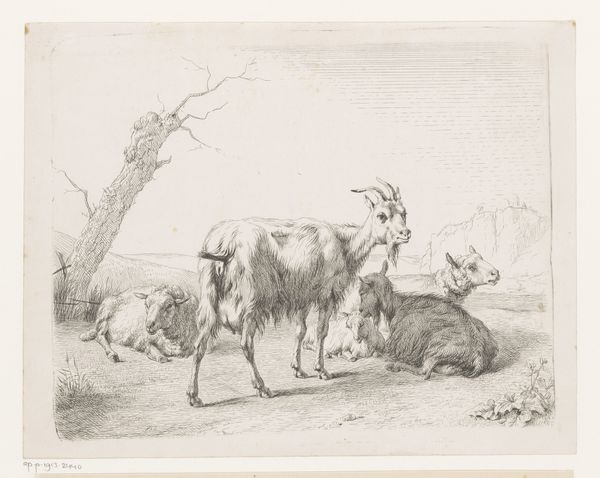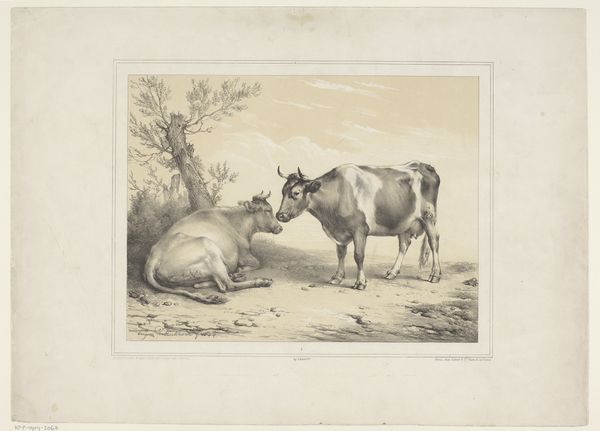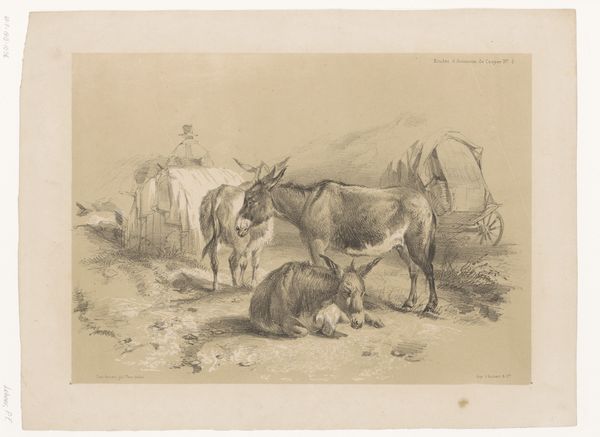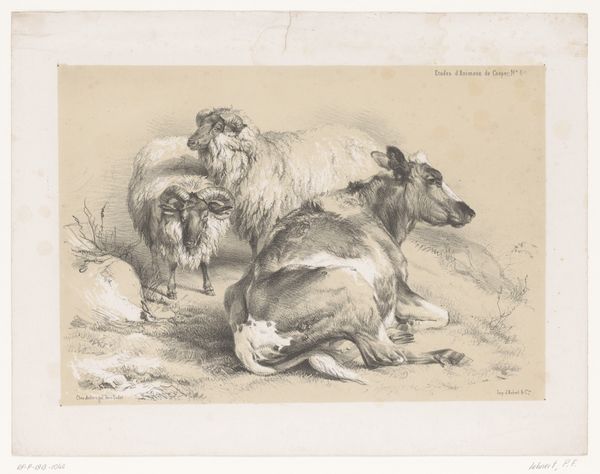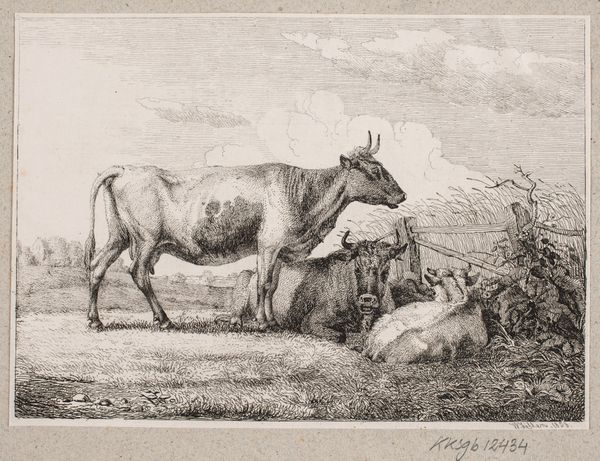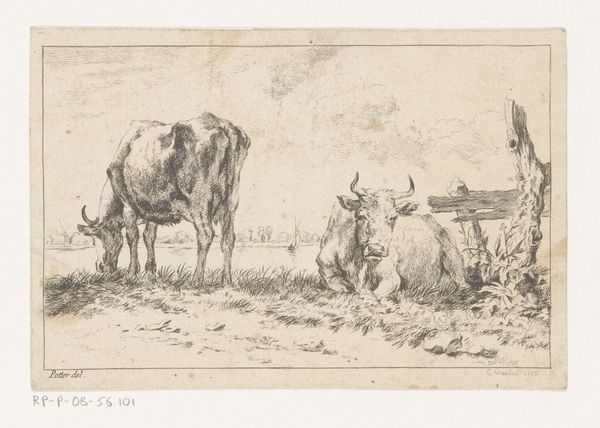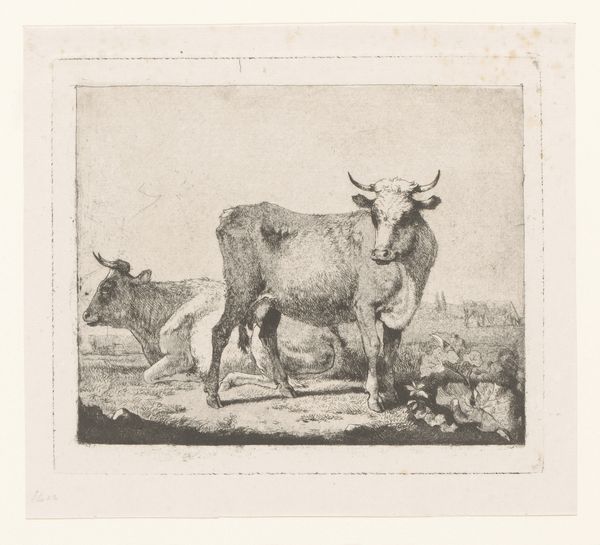
drawing, pencil
#
pencil drawn
#
drawing
#
pencil sketch
#
landscape
#
pencil
#
genre-painting
#
realism
Dimensions: height 240 mm, width 310 mm
Copyright: Rijks Museum: Open Domain
Curator: Here we have "Ezel, schaap en twee geiten in een landschap" - translated as "Donkey, Sheep and Two Goats in a Landscape" - a pencil drawing by Frans Breuhaus de Groot, dating from around 1847 to 1863. Editor: My immediate reaction is that this evokes a sense of tranquility, like a stolen moment of pastoral quiet, although rendered in somewhat stark monochromatic tones. Curator: Precisely. Note how De Groot employs delicate hatching and cross-hatching to delineate form and texture. The interplay of light and shadow sculpts each animal, creating a remarkable sense of volume on a flat surface. The donkey is carefully set higher in the pictorial space as it towers above the other animals. Editor: Yes, but beyond the artistic merit, it is vital to understand how this drawing might speak to us today. Consider the symbolic weight these animals carried within 19th-century Dutch society, where rural life and agricultural labor were cornerstones of both economy and cultural identity. Are we observing an idealized vision, or a truthful reflection of animal relations? Curator: One can't ignore the attention given to detail, particularly in the musculature of the donkey and the wool of the sheep. These choices aren’t merely documentary; they express an underlying aesthetic interest in form and design, an almost abstract elegance amidst apparent naturalism. Note how they’re strategically arranged—each pose slightly different. Editor: But who did this narrative serve? What message does this reinforce about rural idylls and our relationship with animals— especially when considering the exploitative labor practices present during this era and those following? Curator: Perhaps the composition invites closer analysis – observe the way the animals occupy their individual space while contributing to an organized whole, with negative space to draw the eyes along particular forms and lines. Editor: A fruitful point, though it must always be acknowledged that landscapes like these also actively worked to sanitize often-grim realities for agrarian workers who also toiled in the fields, as well as animals who were used to sustain profit, in often unethical means. Curator: An apt consideration to keep in mind. Thank you for highlighting these broader dimensions, as well as providing the chance to examine the formal merits. Editor: And thank you for encouraging dialogue between critical visual analysis and greater socio-political themes present, giving an intersectional, multi-faceted view to understanding "Ezel, schaap en twee geiten in een landschap."
Comments
No comments
Be the first to comment and join the conversation on the ultimate creative platform.
